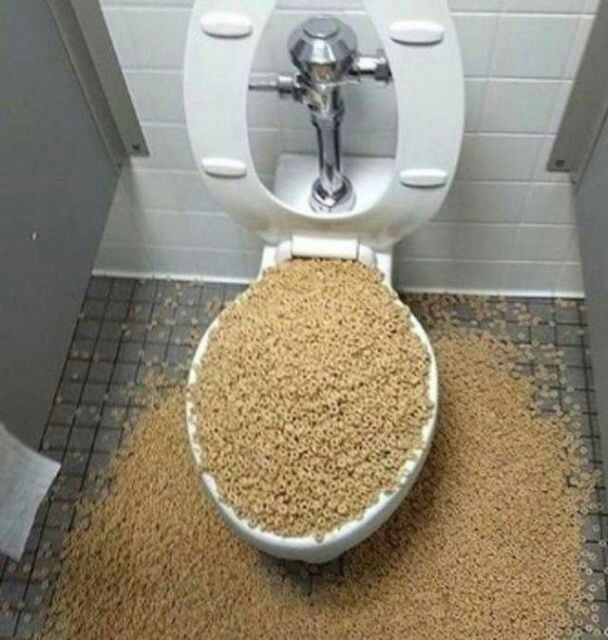Is it Prudent to Flush Food in the Toilet?
Is it Prudent to Flush Food in the Toilet?
Blog Article
Just how do you really feel with regards to Is it safe to flush food (especially rice) down the toilet??

Intro
Lots of people are commonly faced with the dilemma of what to do with food waste, specifically when it pertains to leftovers or scraps. One usual inquiry that occurs is whether it's okay to flush food down the commode. In this post, we'll look into the reasons people might consider purging food, the consequences of doing so, and different approaches for correct disposal.
Reasons people may consider purging food
Lack of awareness
Some people may not know the possible damage brought on by purging food down the bathroom. They may incorrectly think that it's a harmless practice.
Ease
Flushing food down the toilet might appear like a fast and very easy option to disposing of undesirable scraps, especially when there's no neighboring trash bin available.
Laziness
Sometimes, people might just choose to flush food out of sheer idleness, without considering the consequences of their activities.
Effects of flushing food down the bathroom
Ecological influence
Food waste that winds up in rivers can contribute to contamination and damage water ecosystems. Additionally, the water used to purge food can strain water resources.
Plumbing concerns
Purging food can cause blocked pipes and drains, triggering costly plumbing fixings and inconveniences.
Kinds of food that need to not be flushed
Fibrous foods
Foods with fibrous structures such as celery or corn husks can obtain entangled in pipelines and cause clogs.
Starchy foods
Starchy foods like pasta and rice can soak up water and swell, leading to blockages in pipelines.
Oils and fats
Greasy foods like bacon or food preparation oils must never be flushed down the bathroom as they can solidify and cause obstructions.
Appropriate disposal methods for food waste
Making use of a waste disposal unit
For homes outfitted with waste disposal unit, food scraps can be ground up and flushed through the pipes system. Nevertheless, not all foods are suitable for disposal in this manner.
Recycling
Certain food packaging materials can be reused, lowering waste and reducing ecological influence.
Composting
Composting is an environment-friendly method to take care of food waste. Organic materials can be composted and used to enrich soil for gardening.
The value of proper waste management
Decreasing ecological damage
Correct waste management techniques, such as composting and recycling, aid minimize pollution and preserve natural resources for future generations.
Safeguarding plumbing systems
By staying clear of the method of flushing food down the bathroom, property owners can avoid pricey pipes repair work and keep the honesty of their plumbing systems.
Conclusion
In conclusion, while it may be alluring to purge food down the commode for convenience, it is necessary to recognize the potential consequences of this action. By adopting correct waste administration practices and throwing away food waste sensibly, individuals can add to much healthier pipes systems and a cleaner setting for all.
FLUSH FOOD DOWN THE TOILET?
FLUSHING FOOD CAN CAUSE BLOCKED DRAINS IN YOUR HOME
All of the plumbing fixtures in your home are connected to the same sewer pipe outside of your home. This outdoor sewer pipe is responsible for transporting all the wastewater from your home to the Council sewer mains. Even small pieces of food that go down the kitchen sink can cause problems for your sewer. It should therefore be obvious that flushing larger bits of food, such as meat, risks a clog in either the toilet itself or the sewer pipes. Flushing greasy food is even more problematic because oil coagulates when it cools, coating the interior lining of your pipes.
THE TOILET IS NOT A BIN
Food isn’t the only thing that people shouldn’t be flushing down the toilet. People use the toilet to dispose of all kinds of things such as tampons, makeup wipes, dental floss, kitty litter and even underwear. Water goes to great lengths to educate residents about the high costs and stress placed on wastewater treatment systems simply from people flushing the wrong stuff down the toilet. It costs taxpayers millions of dollars each year, and homeowners thousands in blocked drain repairs.
FLUSHING FOOD IS A WASTE OF WATER
Flushing food is a waste of our most precious resource - water. In June this year Level 1 water restrictions were introduced to protect water supply from drought conditions. Much of New South Wales continues to be affected by prolonged drought with recent figures revealing up to 97 per cent of the state remains in drought. Depending on whether you have a single or dual flush toilet, every single flush uses between five and 11 litres of water. In the current climate this is a huge amount of water to be wasting on flushing food that should be placed in the bin (or better yet, the compost).
https://www.jabplumbingsolutions.com.au/blog/can-you-flush-food-down-the-toilet

We are very intrigued by Flushing Food Down the Toilet? and I am praying you enjoyed my piece. Sharing is caring. Who knows, you may just be helping someone out. Thanks a lot for being here. Kindly visit our website back soon.
Call Today Report this page